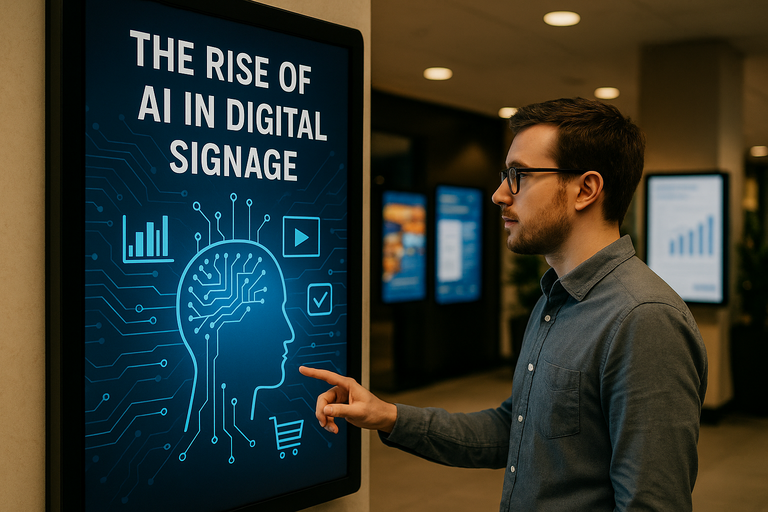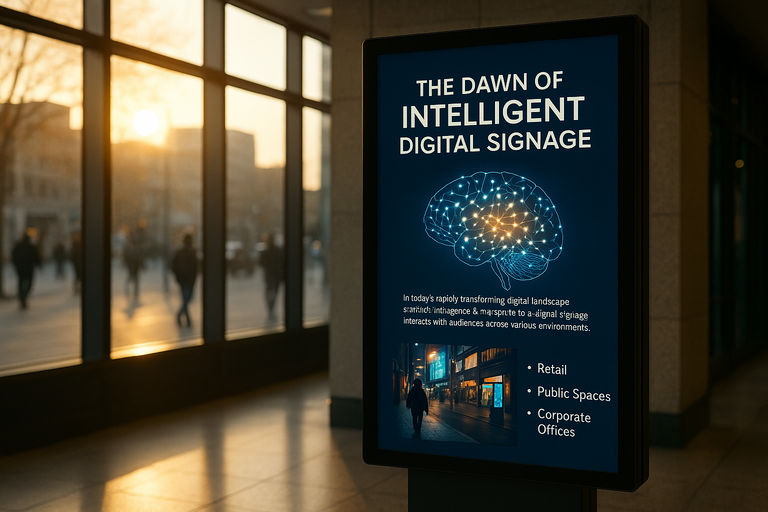Beyond the Billboard: The Rise of Outdoor Digital Signage in Australia
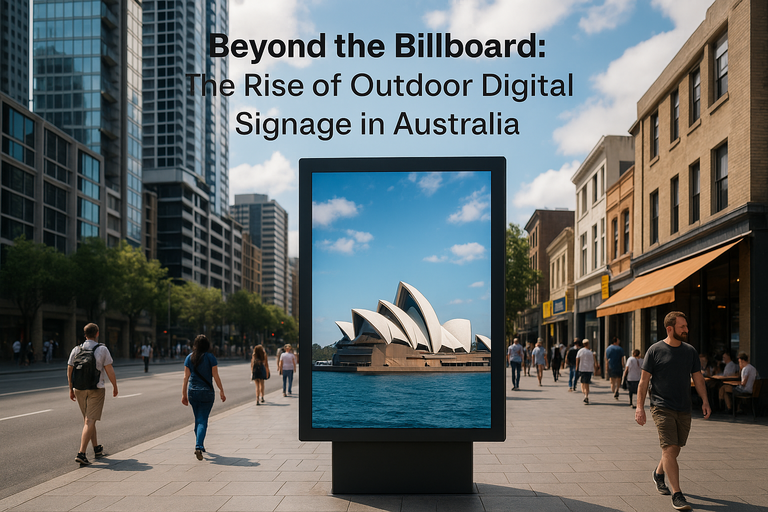
In the bustling urban landscapes and sun-drenched high streets of Australia, competition for consumer attention is fiercer than ever. For decades, static billboards and posters were the primary tools for outdoor advertising. However, in an age of constant digital stimulation, their silent, unchanging messages are increasingly easy to ignore. Businesses now face a critical challenge: how to cut through the noise and create a lasting impression. The answer is not just to go digital, but to go smart. This is where the power of modern outdoor digital signage comes into play, offering a vibrant, dynamic, and effective communication channel.
Australia’s unique environmental conditions, from the intense glare of the midday sun to unpredictable coastal weather, demand a solution that is both resilient and powerful. Standard indoor screens simply cannot cope. This necessity has spurred innovation, leading to the widespread adoption of specialised outdoor digital signage built to thrive in challenging settings. These displays are engineered with high-brightness panels that remain visible even in direct sunlight, and their weatherproof enclosures protect sensitive electronics from heat, rain, and dust. This durability ensures a reliable and continuous presence, making it a sound long-term investment for any enterprise.
At the forefront of this technological evolution is LED digital signage. Light Emitting Diode (LED) technology has revolutionised the industry by offering unparalleled brightness, superior colour contrast, and remarkable energy efficiency compared to older LCD-based systems. Direct-view LED panels create seamless, large-scale video walls of any shape or size, turning entire building facades into spectacular digital canvases. For businesses across Australia, from a small boutique in a Melbourne laneway to a large car dealership in Perth, LED technology makes high-impact digital signage more accessible and effective than ever before, setting the stage for the next leap forward: artificial intelligence.
The Intelligence Layer: How AI Transforms Digital Signage from a Screen to a Strategist

For too long, many businesses have used digital signage as a simple “digital poster,” displaying a looping playlist of static images or videos. While a step up from print, this approach barely scratches the surface of the technology’s potential. The true revolution begins when we add a layer of intelligence. Artificial intelligence (AI) is transforming passive screens into proactive, strategic communication platforms that can see, learn, and react to the world around them in real-time. This moves the goalposts from merely displaying content to having an automated, intelligent conversation with the audience.
Reactive Content: The New Standard for Engagement
One of the most immediate benefits of integrating AI is the ability to enable reactive, context-aware content. Instead of a one-size-fits-all playlist, AI-powered digital signage can automatically adjust its messaging based on a multitude of real-time data feeds. This ensures the content is always relevant, timely, and significantly more likely to capture the attention of passersby. Imagine a hardware store’s large LED digital signage automatically switching from promoting barbecue supplies to advertising waterproof gear the moment the weather forecast predicts rain. This is not science fiction; it is a practical application of AI happening now.
The triggers are virtually limitless. AI can respond to the time of day, showing energising coffee ads in the morning and relaxing dinner specials in the evening. It can sync with event calendars, transforming screens near a sports stadium to display team colours and merchandise deals on game day. For a tourism operator in Cairns, the digital signage could display ads for indoor attractions on rainy days and reef tours when the sun is shining. This reactive capability turns an advertising screen into a helpful, relevant information source, building a stronger connection with potential customers.
Audience-Aware Advertising
AI takes contextual advertising a step further with audience-aware capabilities. Using integrated optical sensors and sophisticated computer vision algorithms, modern digital signage systems can anonymously analyse audience demographics without ever storing personal data or images. The system can identify general characteristics like approximate age groups, gender, and even mood. This allows the AI to select and display the content most likely to resonate with the people standing in front of the screen at that very moment. Privacy is paramount, and these systems are designed to be GDPR-compliant, processing data fleetingly to categorise audiences, not identify individuals.
The implications for advertisers are profound. A screen outside a shopping centre in Sydney could prioritise ads for luxury watches when it detects a predominantly adult, high-income demographic, then seamlessly switch to promotions for video games or toys when it senses a younger audience or families. This ensures that the advertising budget is spent with maximum efficiency, delivering the right message to the right audience at the right time. This level of targeting was once the exclusive domain of online advertising, but AI is bringing it to the physical world through outdoor digital signage.
Predictive Performance and Automation
Perhaps the most powerful aspect of AI in this field is its ability to learn and optimise. An AI-driven system doesn’t just react; it analyses performance over time to make increasingly intelligent decisions. By measuring key engagement metrics—such as how long people look at a particular ad (dwell time), foot traffic patterns, and even interactions via QR codes—the AI can determine which pieces of content are most effective. It learns what designs, messages, and time slots generate the most impact.
This creates a virtuous cycle of improvement. The system can automatically prioritise high-performing ads and phase out less effective ones, constantly refining its strategy to maximise return on investment. This removes the heavy burden of manual A/B testing and scheduling from marketing managers. For any business investing in the digital signage Australia market, this predictive optimisation means their screens are not just displaying ads but are actively working as an automated marketing strategist, ensuring every pixel is working towards a business goal.
Putting It to Work: AI-Powered Use Cases Across Australian Industries
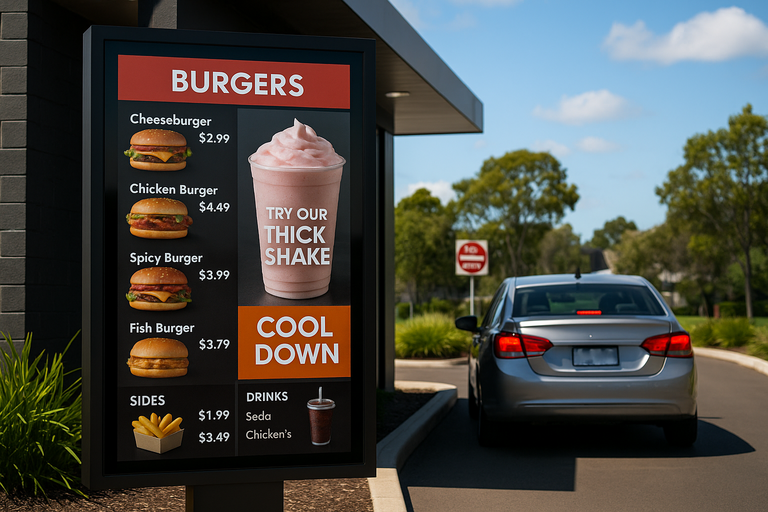
The fusion of AI with robust outdoor digital signage is not just a theoretical concept; it is delivering tangible results across a diverse range of sectors in Australia. From retail and dining to real estate and public services, businesses are leveraging this intelligent technology to enhance customer experiences, boost sales, and improve operational efficiency. These real-world applications demonstrate the practical power of dynamic, data-driven communication.
In the competitive world of Quick-Service Restaurants (QSR), speed and upselling are key. AI-powered digital menu boards in a drive-thru in Brisbane or Melbourne are a game-changer. The system can analyse an order in real-time and suggest a relevant add-on; for example, if a customer orders a spicy burger, the screen might instantly display a promotion for a cooling thickshake. On a hot summer day, the AI could automatically feature frosty drinks and ice cream sundaes more prominently. This intelligent upselling is subtle, effective, and has been proven to increase the average order value significantly.
The Australian real estate market is another prime area for innovation. An agency in a high-foot-traffic area like the Gold Coast can use a window-facing LED digital signage display to create a truly dynamic property showcase. The AI can be programmed to display sun-drenched beachfront homes on bright, sunny days and properties with cosy fireplaces on cooler, overcast afternoons. It could even sync with local flight arrival data from a nearby airport to show “Welcome” messages or feature properties ideal for relocation, directly targeting new arrivals to the area. This transforms a static window card display into a responsive and engaging sales tool.
Retailers are also reaping massive benefits. Imagine a fashion boutique in a chic Sydney laneway. Its outdoor digital signage can do more than just show a sales promotion. Using AI, it can curate and display a live feed of user-generated content from social media, showcasing real customers wearing their clothing. The AI can filter for high-quality images that match the brand’s aesthetic, providing authentic social proof that is far more compelling than traditional advertising. If the system’s sensors detect a larger group of people, it might switch to a high-energy brand video to capture widespread attention.
Beyond commercial applications, AI-powered digital signage is instrumental in building smarter cities. Local councils across Australia are deploying large-format LED screens in public squares and along major roads. Connected to a central AI platform, these screens can manage traffic by displaying real-time congestion updates and suggesting alternative routes. They can show parking availability at nearby facilities, provide public transport schedules, and issue instant alerts during emergencies like bushfires or floods. This application of the technology enhances public safety and creates a more efficient, liveable urban environment for everyone.
The Future is Intelligent and Inescapable
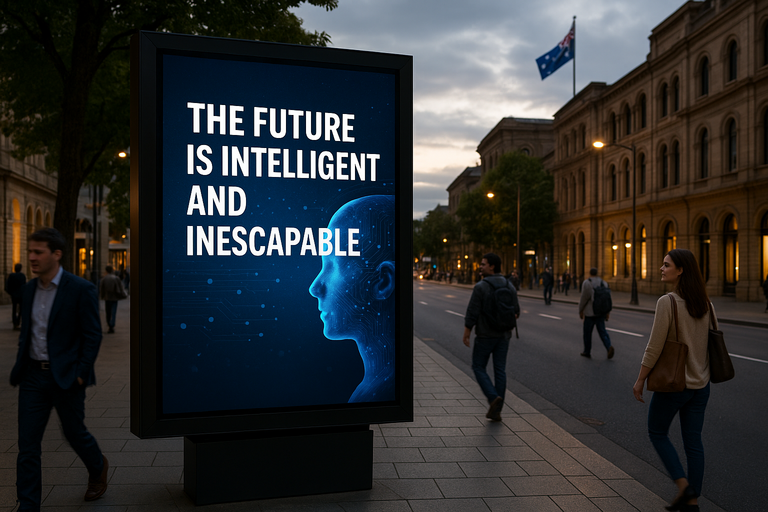
We are standing at a pivotal moment in the history of communication. The journey from static, printed signs to the intelligent, data-driven platforms of today has been remarkable. The convergence of brilliant, durable outdoor LED digital signage with the cognitive power of artificial intelligence is fundamentally reshaping how businesses and organisations in Australia connect with people in the physical world. It marks a definitive shift from one-way broadcasting to dynamic, two-way interaction, where screens can listen, understand, and respond.
For Australian businesses, this is more than just an exciting trend; it represents a tangible competitive advantage. The ability to deliver personalised, contextually relevant content in real-time drives deeper engagement, boosts sales, and provides an unparalleled return on investment. The automation and predictive analytics offered by AI remove the guesswork from advertising, allowing marketing teams to focus on strategy while the technology handles flawless execution. This powerful form of digital signage is the new frontier of customer communication.
As the technology continues to evolve, we can anticipate even more seamless integrations. Imagine digital signage that syncs with a customer’s mobile app for hyper-personalised offers or screens that interact with the Internet of Things (IoT) to reflect inventory levels in real-time. The era of the smart screen is here, and its impact is only just beginning to be felt. The future of advertising is not just bright; it is intelligent, and it is happening right before our eyes on the streets of Australia.

